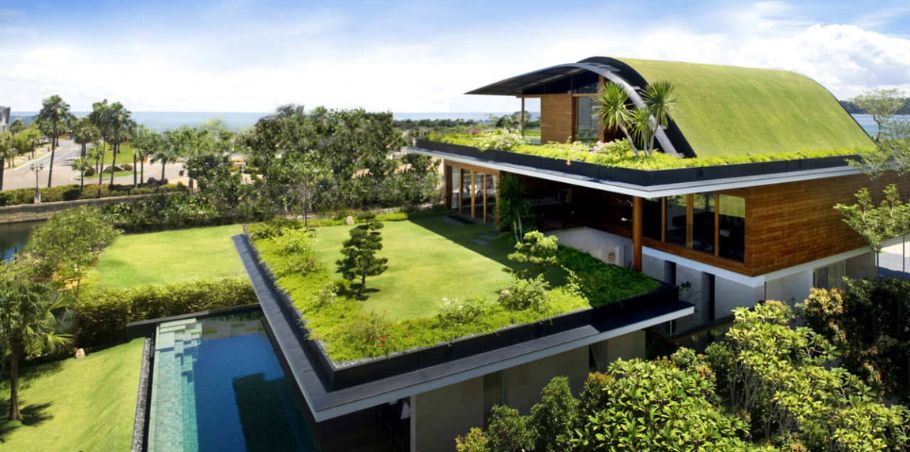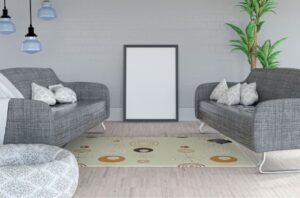Eco-Friendly Housing: The Future of Sustainable Living
Why Eco-Friendly Housing Matters
Echoing the sentiments of environmental advocates, eco-friendly housing has grown in importance as more people recognise the need to reduce their ecological footprint. By adopting sustainable building practices and materials, homes like the Audobon homes contribute significantly to the global effort to preserve natural resources. Our planet faces numerous threats, such as climate change, deforestation, and resource depletion, making integrating more sustainable habits into our daily lives crucial.
According to the UN Sustainable Consumption and Production Guide, achieving these goals is essential for a more sustainable future, and eco-friendly housing is a key element in this pursuit.
Audubon homes are designed to blend seamlessly with their natural surroundings, prioritising sustainability and energy efficiency. They often feature bird-friendly elements, such as native plants and habitat enhancements, to support local wildlife. Ultimately, these homes reflect a commitment to conservation and environmental awareness.
Key Features of Eco-Friendly Homes
Eco-friendly homes are thoughtfully designed with features that promote sustainability and reduce environmental impact. These homes integrate various innovative technologies and design elements to manage resources efficiently. Some essential features include:
- Energy-efficient appliances and lighting: Energy-efficient appliances such as refrigerators, air conditioners, and washers and dryers use less electricity, helping to reduce energy consumption. Similarly, LED lighting consumes significantly less power compared to traditional incandescent bulbs.
- Solar panels: By utilizing solar energy, homeowners can reduce dependency on fossil fuels, leading to lower electricity bills and a lower carbon footprint. Solar-generated electricity can also power household appliances and lights.
- Insulated windows and walls: Maintaining a constant interior temperature lowers the demand for excessive heating and cooling when proper insulation is in place. This saves energy, lowers utility bills, and increases the comfort of the home.
- Water-saving fixtures: Those that don’t sacrifice functionality include dual-flush toilets, showerheads, and low-flow faucets. Using these fixtures can drastically reduce water usage and lower water bills.
Benefits of Living in an Eco-Friendly Home
Residing in an eco-friendly home offers numerous benefits that extend beyond just financial savings. Some of these benefits include:
- Cost savings: Efficient energy and water use lead to significantly lower utility bills over time. Investing in energy-efficient appliances, solar panels, and water-saving fixtures reduces long-term operational costs, providing tangible economic benefits.
- Health advantages: Improved indoor air quality is achieved through non-toxic materials, better ventilation systems, and avoiding harmful chemicals. As a result, there is a lower chance of respiratory disorders and other health problems in the home.
- Positive environmental impact: Eco-friendly homes reduce the carbon footprint by employing sustainable practices, renewable energy sources, and efficient resource management. These efforts collectively help mitigate climate change and conserve natural resources.
- Financial incentives: Many governments offer financial incentives, such as tax breaks and rebates, for green home improvements. These incentives can make it cheaper for homeowners to switch to an eco-friendly home and can also offset the initial costs.
Further, eco-friendly homes advance global sustainability efforts by promoting responsible resource management and reducing environmental strain.
Building Materials and Techniques
The construction of eco-friendly homes involves using advanced materials and methods to be sustainable and environmentally responsible. Choosing the appropriate materials and techniques is crucial for minimising the ecological footprint of the building. Some popular choices include:
- Reclaimed wood: Recycled timber reduces the need for new lumber, which helps preserve forests and reduces waste. Reclaimed wood is often sourced from deconstructed buildings and can be repurposed for new construction.
- Non-toxic paints: These improve air quality within the home by reducing the emission of volatile organic compounds (VOCs). Non-toxic paints are made from natural ingredients and are safer for humans and the environment.
- Green roofs: Roofs covered with vegetation provide natural insulation, reducing energy costs for heating and cooling. They also enhance air quality by absorbing pollutants and aid in the management of stormwater runoff.
- Passive solar design: This design principle maximises natural light and heat during winter, reducing artificial lighting and heating need. It involves strategically placing windows, walls, and floors to collect, store, and distribute solar energy.
Energy Efficiency and Conservation
Energy conservation is a cornerstone of eco-friendly housing. Homeowners can significantly reduce energy consumption by using advanced technologies and smart design principles. Key strategies to achieve high levels of energy efficiency include:
- Renewable energy: Homes can become less dependent on non-renewable energy sources by installing solar panels or wind turbines to generate clean energy. These systems can provide a significant portion, if not all, of a home’s energy needs.
- Smart home technology: These systems regulate energy use automatically based on occupancy and usage patterns. Smart thermostats, for example, can learn the household’s schedule and adjust heating and cooling accordingly to minimise energy waste.
Water Conservation Strategies
Implementing water-saving strategies is a key component of eco-friendly living. Reducing water usage conserves this vital resource and lowers utility bills. Effective measures include:
- Low-flow fixtures: Water-saving devices, like showerheads, toilets, and faucets, can significantly lower water consumption without sacrificing functionality.
- Rainwater harvesting involves capturing and reusing rainwater for non-potable purposes like irrigation. Rain barrels and more advanced systems can collect and store significant amounts of rainwater.
- Smart irrigation: These systems optimize water usage for landscaping based on weather conditions and soil moisture levels. This ensures that plants receive the right amount of water, reducing waste and promoting healthier plant growth.
Drought-resistant plants: Native plants that require minimal water are a wise choice for landscaping. These plants are adapted to the local climate and soil conditions, reducing the need for frequent watering and other maintenance.
If you gained new insights from this article, explore our blog, Gimkit, for more enlightening content.
Share this content:














Post Comment